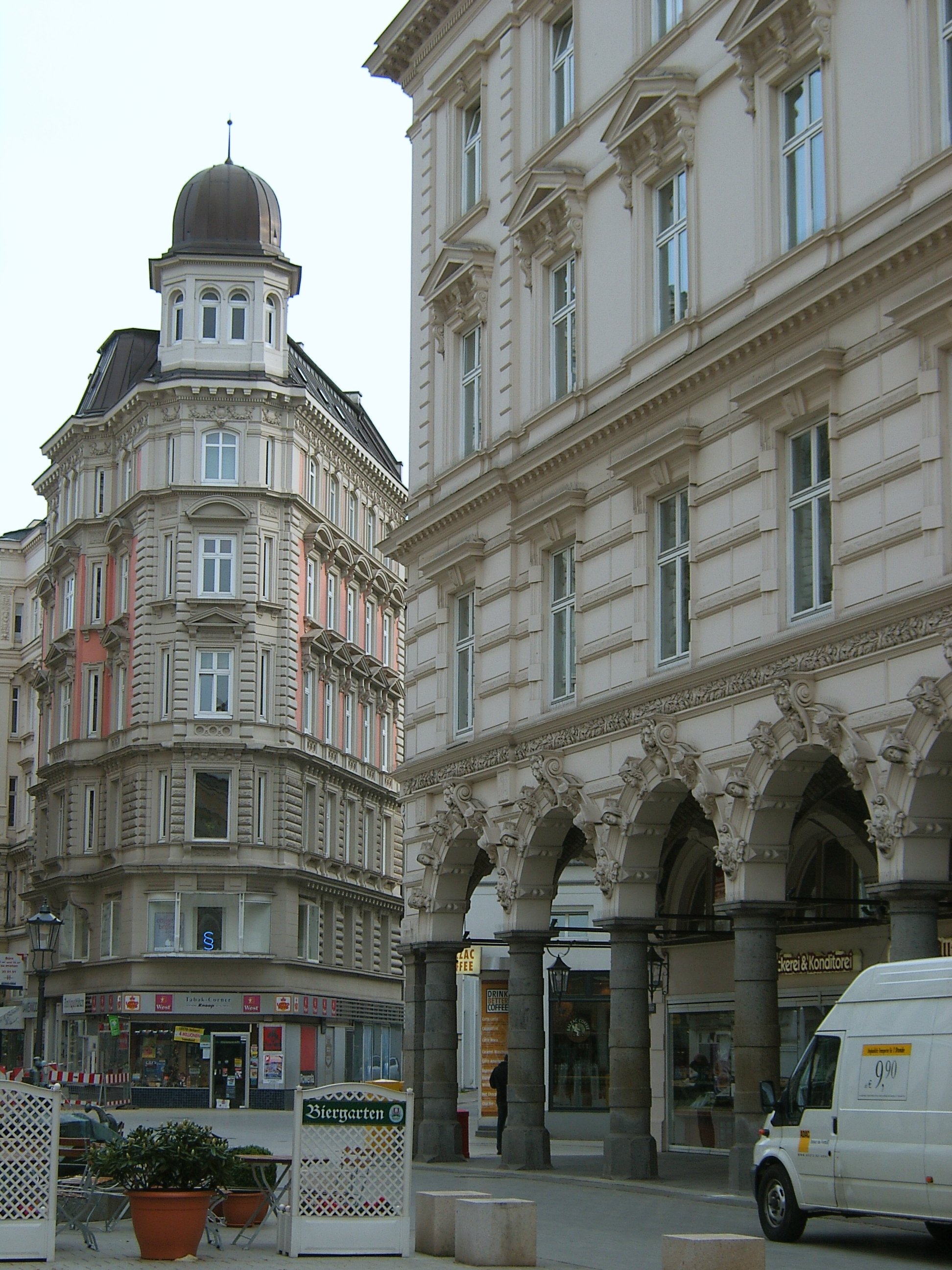Colonnaden on:
[Wikipedia]
[Google]
[Amazon]
 The Colonnaden (the
The Colonnaden (the
Bildarchiv-hamburg.de, in German
 In the 1870s, the street was a private road of the Wex brothers. Most buildings were erected around 1880. When the street was built, the last remnants of the
In the 1870s, the street was a private road of the Wex brothers. Most buildings were erected around 1880. When the street was built, the last remnants of the Verordnung über den Denkmalschutz der Colonnaden
Landesrecht-hamburg.de, 20 December 1977, in German The footbridge to the hotel building was demolished in 2005. In addition, the street was redesigned the same year. The southern part was partly re-opened for motorized traffic.
of Colonnaden Streets in Hamburg Shopping districts and streets in Germany Pedestrian streets in Germany Hamburg-Mitte {{Hamburg-geo-stub
 The Colonnaden (the
The Colonnaden (the colonnades
In classical architecture, a colonnade is a long sequence of columns joined by their entablature, often free-standing, or part of a building. Paired or multiple pairs of columns are normally employed in a colonnade which can be straight or cur ...
, pl. also in German lang.) is a shopping street in Neustadt quarter, Hamburg
(male), (female) en, Hamburger(s),
Hamburgian(s)
, timezone1 = Central (CET)
, utc_offset1 = +1
, timezone1_DST = Central (CEST)
, utc_offset1_DST = +2
, postal ...
, Germany
Germany,, officially the Federal Republic of Germany, is a country in Central Europe. It is the second most populous country in Europe after Russia, and the most populous member state of the European Union. Germany is situated betwe ...
. The street, now largely a pedestrian zone
Pedestrian zones (also known as auto-free zones and car-free zones, as pedestrian precincts in British English, and as pedestrian malls in the United States and Australia) are areas of a city or town reserved for pedestrian-only use and in whi ...
, forms a diagonal junction from Jungfernstieg
The Jungfernstieg () is an urban promenade in Hamburg, Germany. It is the city's foremost boulevard.
Location
Jungfernstieg mostly lies within the quarter of Neustadt; however at its easternmost it stretches as far as Hamburg-Altstadt. In to ...
boulevard to Esplanade
An esplanade or promenade is a long, open, level area, usually next to a river or large body of water, where people may walk. The historical definition of ''esplanade'' was a large, open, level area outside fortress or city walls to provide cle ...
/ Stephansplatz. It has a rich tradition and was dubbed a "Prachtmeile" (lit. ''splendour mile''). Most of the buildings are designed in Renaissance Revival architecture
Renaissance Revival architecture (sometimes referred to as "Neo-Renaissance") is a group of 19th century architectural revival styles which were neither Greek Revival nor Gothic Revival but which instead drew inspiration from a wide range o ...
and the north eastern side of the street is formed by arcades.ColonnadenBildarchiv-hamburg.de, in German
History
 In the 1870s, the street was a private road of the Wex brothers. Most buildings were erected around 1880. When the street was built, the last remnants of the
In the 1870s, the street was a private road of the Wex brothers. Most buildings were erected around 1880. When the street was built, the last remnants of the Oper am Gänsemarkt
The Oper am Gänsemarkt was a theatre in Hamburg, Germany, built in 1678 after plans of Girolamo Sartorio at the Gänsemarkt square. It was the first public opera house to be established in Germany: not a court opera, as in many other towns. E ...
were demolished. The KellJung line of Hamburg U-Bahn
The Hamburg U-Bahn is a rapid transit system serving the cities of Hamburg, Norderstedt and Ahrensburg in Germany. Although referred to by the term U-Bahn (the "U" commonly being understood as standing for "underground"), most of the system's ...
, later known as U1 line, was built until 1930 below the street, leading occasionally to a sales slowdown of the local shops.
In 1974, the street became a pedestrian zone. At the same time, a footbridge was built to the building of the former Hotel Esplanade, Dammtor
Dammtor is a zone (''Ort'') of the German city of Hamburg, situated between the quarters of Rotherbaum (in the borough of Eimsbüttel) and Neustadt (in the borough of Mitte).
History
Originally, the ''Dammthor'' was a city gate between the ''Al ...
area and Dammtor station, linking the street with the footbridge of the Dag Hammarskjöld bridge at the station. Many of the old apartment buildings are under monumental protection since 1978.Landesrecht-hamburg.de, 20 December 1977, in German The footbridge to the hotel building was demolished in 2005. In addition, the street was redesigned the same year. The southern part was partly re-opened for motorized traffic.
References
External links
of Colonnaden Streets in Hamburg Shopping districts and streets in Germany Pedestrian streets in Germany Hamburg-Mitte {{Hamburg-geo-stub